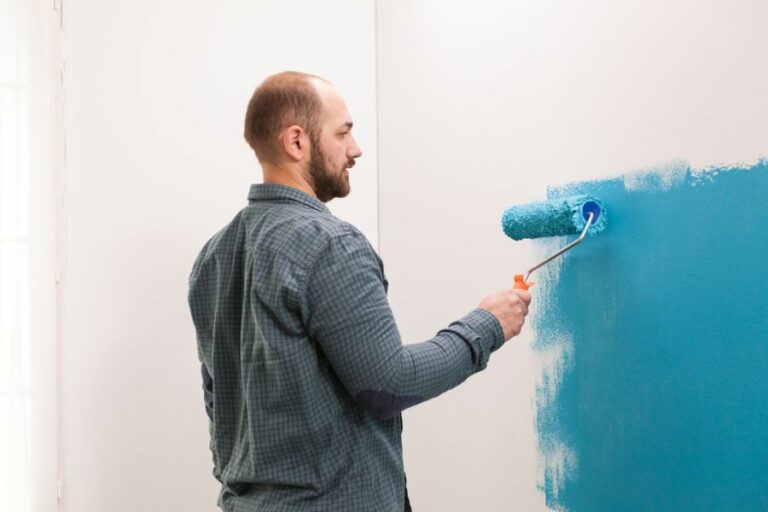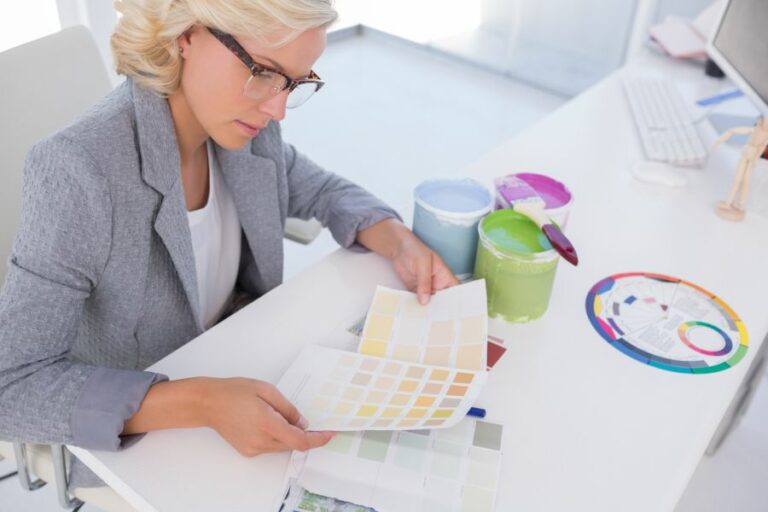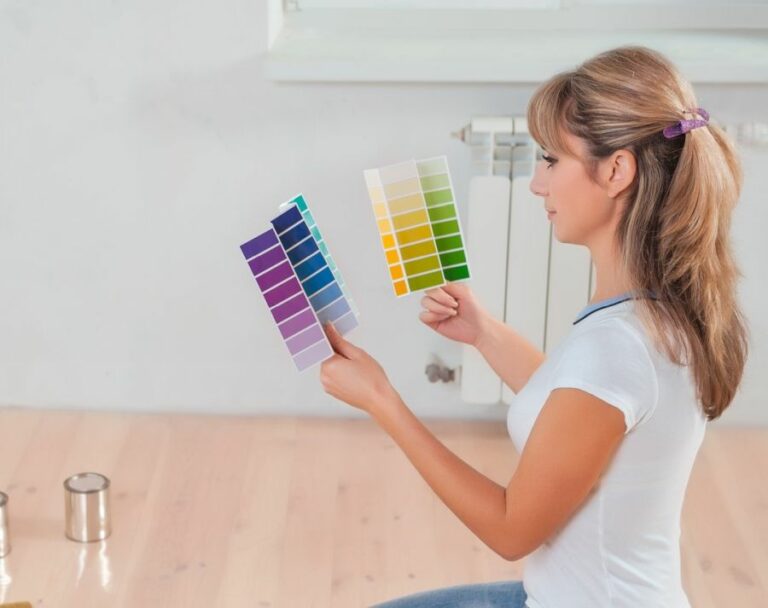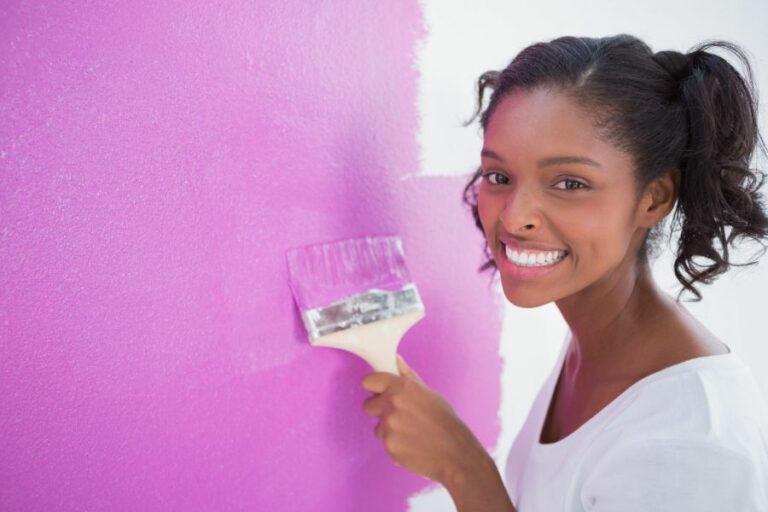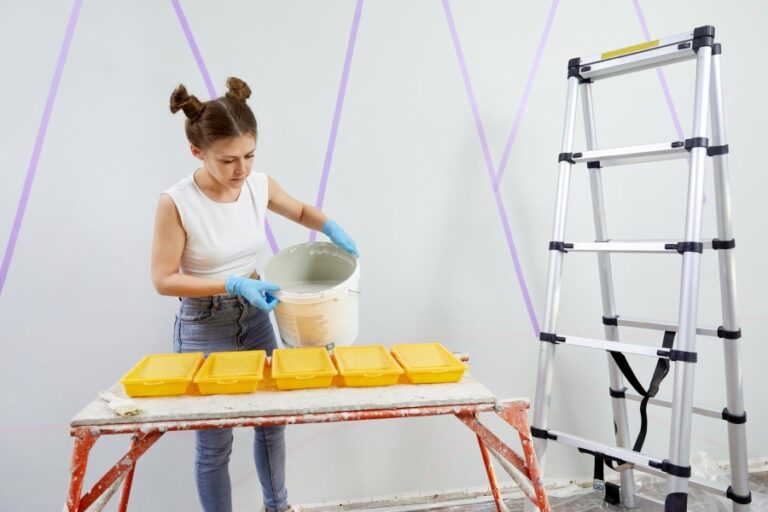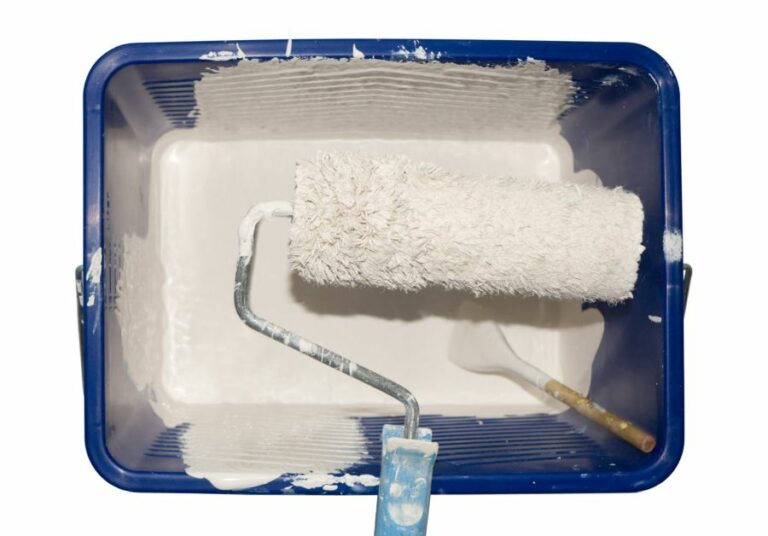Affordable Indoor Texture Paints – Pricing Focused. What Pros Say
Are you looking to revamp your walls with amazing texture paints but worried about burning a hole in your pocket? Well, worry no more! I am here to guide you through affordable indoor texture paint options that provide excellent results without costing a fortune.
Affordable indoor texture paints:>
Affordable indoor texture paints can upgrade your home’s appearance without breaking the bank. Popular budget-friendly options include sand texture paint ($15-$20/gallon), knockdown texture ($12-$15/gallon of pre-mixed joint compound), inexpensive Venetian plaster ($25-$40/gallon), and brushed-on textures with standard interior paint ($30-$40/gallon). When choosing the right paint, consider wall condition, maintenance, and skill level.

Looking for affordable indoor texture paints without compromising on quality? You’re in luck! I’ve compiled a list of budget-friendly options that’ll transform your walls. Keep reading to discover top-notch, wallet-friendly texture paints and learn valuable tips on how to maximize savings.
Contents
- 1 Budget-Friendly Interior Texture Paints – Price Oriented
- 2 Top-Rated Interior Wall Paint Textures
- 3 Cost of Textured Paint for Wall Designs
- 4 Optimal Paint Selection for Textured Finishes
- 4.1 • Acrylic Paints: Versatile and Durable
- 4.2 • Latex Paints: Affordable and Environmentally Friendly
- 4.3 • Oil-Based Paints: Rich and Durable Finish
- 4.4 • Specialty Paints: Unique Effects and Finishes
- 4.5 • Choosing the Right Primer for Texture Paint
- 4.6 • Final Thoughts on Choosing the Best Paint for Texture Paint
- 5 Price per Square Foot for Textured Paint
Budget-Friendly Interior Texture Paints – Price Oriented
Upgrading the look of your home doesn’t have to cost a fortune. One simple and budget-friendly way to do this is through the use of affordable indoor texture paints.
• Finding Your Perfect Texture Paint at the Right Price
When it comes to texture paints, there is a wide range of options available in the market. To help guide you in finding the perfect texture paint at an affordable price, I have listed down some recommendations for budget-friendly texture paints.
1. Sand Texture Paint
Sand texture paint is a popular choice for many homeowners due to its durability and affordability. It creates a textured finish that resembles sand, adding depth and dimension to your walls.
You can opt for pre-mixed sand texture paint or sand additives, which can usually be found in most paint stores. The average price of sand texture paint is around $15 to $20 per gallon.
2. Knockdown Texture
Knockdown texture is achieved by applying joint compound or wallboard compound onto the walls and then knocking it down using a trowel, giving the surface a mottled appearance. This option is both budget-friendly and easy to apply; you’ll only need a basic set of tools to achieve the desired effect.
Knockdown texture typically costs around $12 to $15 per gallon of pre-mixed joint compound.
3. Venetian Plaster
For a more luxurious finish, Venetian plaster is an excellent option. Venetian plaster can be pricey, but there are more affordable alternatives available that mimic the authentic look.
This texture paint technique involves applying several layers of troweled-on plaster, giving the walls a unique and elegant finish. Inexpensive versions of Venetian plaster paint generally range from $25 to $40 per gallon.
4. Brushed-On Textures
Another low-cost option is using regular interior paint and simply applying it in creative ways to achieve a textured look. This can be done with brushes, sponges or cloth, allowing you to create various patterns and effects on your walls.
A gallon of standard interior paint costs about $30 to $40, making this technique cost-effective and versatile.
• Factors to Consider When Choosing Texture Paint
While price is undoubtedly a significant factor in choosing texture paint, there are other factors to consider before making your final decision.
1. Wall Condition
The existing condition of your walls can impact the type of texture paint you choose. For example, if your walls have visible imperfections, you might want to opt for a thicker texture paint to hide any blemishes.
2. Maintenance
Some texture paints may require more maintenance than others. For example, sand texture paint is low-maintenance and long-lasting, making it a suitable choice for busy households. On the other hand, Venetian plaster might require more touch-ups and care to maintain its elegant finish.
3. Application Method and Skill Level
Different texture paints call for various application methods, which may require specific skills and experience. When selecting texture paint within your budget, consider the ease of application and whether it is suitable for a do-it-yourself (DIY) project or if you will need professional help.
• Further Resources and Expert Advice
To help you get more ideas and inspiration for using affordable texture paints in your home, check out the National Park Service’s guide to decorative interior paints.
Not only will you find useful information on different texture paint types and techniques, but you will also gain insights into how to preserve historic interiors.
In conclusion, giving your walls a refreshing look doesn’t have to be expensive. By considering affordable indoor texture paints and being mindful of factors like wall condition, maintenance, and skill level, you can achieve stunning results without breaking the bank.
Don’t be afraid to get creative, and remember to take your time in doing thorough research to find the perfect budget-friendly texture paint for your space.
Top-Rated Interior Wall Paint Textures
• Importance of Selecting the Right Paint Texture
Selecting the appropriate paint texture for your interior walls can greatly enhance a space’s overall appearance and ambiance. The right texture transforms a room’s look and feel and can address minor surface imperfections and simplify maintenance.
To make an informed decision, it’s crucial to understand the different types of paint textures and their applications.
• Flat or Matte Paint Texture
Flat or matte paint finishes are non-reflective, providing a smooth and uniform appearance that is generally more forgiving of imperfections than other finishes.
Their ability to hide minor dents or scratches makes them ideal for walls with frequent wear and tear or those in older homes where surfaces may have deteriorated over time. Matte finishes also work well for spaces with less natural light, as they help to diffuse light and reduce glare.
Some popular areas for the use of flat paint textures include living rooms, dining areas, and bedrooms.
Pros:
- Provides a smooth, uniform appearance
- Camouflages minor surface imperfections
- Reduces glare in rooms with limited natural light
Recommended use: Living rooms, dining areas, and bedrooms.
• Eggshell Paint Texture
The eggshell paint texture is one step glossier than flat or matte finishes, providing a subtle hint of shine while still maintaining a relatively smooth surface. This is an ideal choice for those who want a low-gloss sheen without the potential imperfections highlighted by higher-gloss finishes.
Due to its ability to resist stains and better withstand frequent cleaning, eggshell texture works well in high-traffic areas or for rooms where moisture may be an issue. Good examples of such spaces include hallways, kitchens, and bathrooms.
Pros:
- Offers a subtle sheen
- Decent resistance to stains
- Durable, making it easy to clean
Recommended use: Hallways, kitchens, and bathrooms.
• Satin Paint Texture
Satin paint finishes providing a smooth, velvety surface that reflects more light than matte or eggshell textures, resulting in a soft, elegant appearance. This texture delivers an ideal balance of being easy to clean and maintaining a classy look.
The satin finish is suitable for various spaces, including family rooms, foyers, kids’ bedrooms, and laundry rooms. However, remember that this texture may emphasize surface imperfections.
Pros:
- Soft, elegant appearance
- Resists stains and moisture
- Relatively easy to clean
Recommended use: Family rooms, foyers, kids’ bedrooms, and laundry rooms.
• Semi-Gloss Paint Texture
Semi-gloss paint finishes are more reflective than satin and are known for their durability and ease of maintenance. They effectively resist stains, moisture, and mildew, making them an excellent choice for high-moisture areas such as bathrooms and kitchens or high-touch surfaces like doors and trim.
However, their reflectiveness may cause surface imperfections to be more noticeable.
Pros:
- Highly resistant to stains and moisture
- Easy to clean
- Optimal for high-moisture areas
Recommended use: Bathrooms, kitchens, doors, and trim.
• Gloss Paint Texture
Gloss paint finishes are the most reflective and durable option available, providing a high-shine appearance. They offer a stunning, glass-like finish and are also exceptionally easy to clean.
However, this finish is the most unforgiving when it comes to highlighting surface imperfections. Gloss paint textures are best suited for accent features like window trim, doors, and kitchen cabinets.
Pros:
- Maximum reflectiveness
- Highly durable
- Easy to clean
Recommended use: Doors, window trim, and kitchen cabinets.
• Conclusion
The choice of the best paint texture for your interior walls depends on your specific needs, desired appearance, and the room’s intended use.
Flat and matte textures are ideal for hiding imperfections and reducing glare, while satin and semi-gloss finishes provide a balance between reflectiveness and covering flaws.
Eggshell textures are suitable for high-traffic, moisture-prone areas, and gloss finishes are perfect for accentuating features such as window trim, doors, and kitchen cabinets.
For additional expert advice on selecting the right paint texture for your space, consider consulting professional painting resources, such as the Paint Quality Institute.
Texture Type | Description | Benefits |
|---|---|---|
Flat or Matte | A non-reflective, smooth surface that hides imperfections well | Ideal for low-traffic areas, easy to touch up and absorbs light |
Eggshell | A low-sheen finish with a slight luster, similar to the texture of an eggshell | Easy to clean, resists stains, and works well in medium-traffic areas |
Satin | A soft, velvety finish with a slight sheen that reflects some light | Durable and easy to clean, suitable for high-traffic areas, and moisture-resistant |
Semi-Gloss | A subtly shiny finish that is more reflective than satin, but less than gloss | Highly durable, easy to clean, and moisture-resistant. Good for trim and doors |
Gloss | A high-shine, reflective finish that creates a smooth, hard surface | Extremely durable and easy to clean, but may show imperfections more easily |
Cost of Textured Paint for Wall Designs
Wall texture design paint is an essential aspect of interior design that homeowners and professionals alike prioritize. It involves the application of various paint techniques to create different visual effects and textures on walls for a unique and personalized look.
Since the cost of wall texture design paint varies based on several factors, I aim to provide a comprehensive guide to help you make informed decisions.
• Factors Affecting the Cost of Wall Texture Design Paint
– Type of Texture Paint
There are several types of texture paints available, each with its unique effects and price range. Some common texture paint options include:
- Smooth Texture Paint: This paint provides a smooth and even finish, often with a slightly glossy appearance. It is relatively affordable and easy to apply, making it a popular choice for many homeowners. Expect to pay between $10 and $30 per gallon for smooth texture paint.
- Sand Texture Paint: As the name suggests, this paint resembles sand, providing a rough and granular appearance. It is often used to create a rustic or beachy vibe in a room. Sand texture paint typically costs between $15 and $40 per gallon.
- Venetian Plaster: This luxurious, high-end paint option creates a polished and marble-like finish. Venetian plaster is a more expensive choice, with prices ranging from $50 to $150 per gallon.
- Faux Finish Paint: These paints are designed to mimic the appearance of various materials like wood, stone, or marble. Prices may vary depending on the specific faux finish effect, but expect to pay between $20 and $80 per gallon.
– Size of the Area to be Painted
The size of the wall area to be painted directly impacts the cost of wall texture design paint. Larger spaces require more paint, which increases the overall cost.
Generally, a gallon of paint covers around 300 to 400 square feet, depending on the type of texture, paint, and surface. Measure your walls to estimate the number of gallons needed for your project.
– Labor Costs
If you plan to hire a professional painter for your wall texture design, labor costs will undoubtedly affect your budget. Professional painters typically charge between $20 and $50 per hour for their services.
Factors that can influence labor costs include your location, the complexity of the texture design, and the professional’s experience level.
• Tips for Saving on Wall Texture Design Costs
– DIY Approach
One way to save on wall texture design paint costs is by tackling the project yourself. While this may seem intimidating, many resources are available online, such as diynetwork.com, that can provide helpful tips and instructions.
However, if you opt for a DIY approach, do keep in mind that the final result may not be as polished as a professional’s work.
– Choose Cost-Effective Paint Options
Opting for cheaper texture paint types or brands can help reduce costs significantly. For a more budget-friendly project, consider using smooth texture paint or sand texture paint instead of more expensive options like Venetian plaster or faux finish paint.
– Bulk Purchase and Sales
Purchasing paint in bulk or during sales can lead to significant savings. Keep an eye out for discounts and deals on paint at your local hardware store, or search online for competitive prices.
• Get Multiple Quotes
When hiring a professional painter for your wall texture design, it’s essential to get multiple quotes to compare and choose the best option for your budget. Ensure you also inquire about any additional fees for materials or preparatory work, as these can increase the overall cost.
• Conclusion
Determining the cost of wall texture design paint ultimately depends on the type of paint, the size of the area to be painted and labor costs.
By considering these factors and utilizing the cost-saving tips mentioned in this article, homeowners and professionals can create beautiful texture finishes within their budgets.
Type of Wall Texture Design | Estimated Cost |
|---|---|
Stencil Design | Approximately $25-80 per sq. ft. |
Roller Texture | Approximately $2-7 per sq. ft. |
Knockdown Texture | Approximately $4-6 per sq. ft. |
Orange Peel Texture | Approximately $2-5 per sq. ft. |
Brush Texture | Approximately $3-6 per sq. ft. |
Trowel Texture | Approximately $7-15 per sq. ft. |
Optimal Paint Selection for Textured Finishes
Texture paint is an excellent way to add depth and character to walls, ceilings, and other surfaces. Choosing the right paint for the job will ensure a long-lasting, professional result.
• Acrylic Paints: Versatile and Durable
One of the most popular options for texture paint is acrylic paint. This water-based paint is known for its versatility, durability, and ease of application. Acrylic paints dry quickly, are resistant to fading and yellowing, and offer a wide range of color options.
Recommendation: Choose Acrylic Paint for Most Texture Painting Projects
In most cases, acrylic paint is a good choice for texture painting because of its many benefits. It can be easily mixed with various mediums, such as sand or texture additives, to create different effects. As an example, the Golden Heavy Body Acrylics line allows for excellent texture retention and can be used on various surfaces such as canvas, wood, or plaster.
• Latex Paints: Affordable and Environmentally Friendly
Latex paint is another popular option for texture paint. This water-based paint is known for its affordability, easy cleanup, and low odor compared to oil-based paints. Additionally, latex paint is more environmentally friendly due to its lower levels of volatile organic compounds (VOCs).
Recommendation: Consider Latex Paint for Budget-Friendly Texture Painting
If budget is a concern, latex paint might be a suitable option for texture painting projects. While not as versatile as acrylic paints, latex paints can still be used with mediums, such as texture additives or mixed with sand, to create textured effects on walls and ceilings.
I recommend using high-quality latex paint, such as the Benjamin Moore’s Regal Select line for best results.
• Oil-Based Paints: Rich and Durable Finish
Oil-based paints have been used for centuries for their rich, durable finish. These paints are known for their excellent adhesion and longer drying times, which allow for more precise texture application.
Oil-based paints are often used for projects that require a high level of detail and craftsmanship, such as fine art or restoration projects.
Recommendation: Choose Oil-Based Paint for High-Quality Detail and Craftsmanship
When a high-quality, durable finish is essential, oil-based paint may be the best choice. For texture painting, oil-based paint can be mixed with texture mediums to create various effects on surfaces like wood or canvas.
The Gamblin Artist’s Oil Paints line offers a wide range of colors and excellent texture retention suitable for artistic or restoration projects.
• Specialty Paints: Unique Effects and Finishes
In some cases, specialty paints may be the best option for texture paint. These paints are designed for specific purposes, such as creating faux finishes, textured metallic effects, or plaster-like surfaces.
Recommendation: Explore Specialty Paints for Unique Texture Painting Projects
For a truly unique texture paint effect, consider trying specialty paint. Some options include:
- Venetian plaster: Achieve a luxurious, marble-like finish with Venetian plaster, such as Valspar’s Venetian Plaster.
- Metallic paint: Add depth and shimmer to textured surfaces with metallic paint, such as the Modern Masters Metallic Paint Collection.
• Choosing the Right Primer for Texture Paint
Before diving into texture painting, it’s essential to ensure you have a suitable primer for your chosen paint type. Primers help improve adhesion and uniformity and extend the life of your paint job.
Be sure to select a primer that complements your chosen paint, such as a water-based primer for acrylic or latex paint or an oil-based primer for oil-based paint.
For more information on selecting the right primer, visit the U.S. Department of Energy’s primer guide.
• Final Thoughts on Choosing the Best Paint for Texture Paint
Ultimately, the best paint for texture paint depends on your specific project, budget, and desired outcome.
Acrylic and latex paints are versatile and affordable options for most projects, whereas oil-based and specialty paints are best suited for high-end or unique texture painting projects. Always remember to pair your chosen paint with a compatible primer for optimal results.
Paint Brand | Paint Type | Benefits | Remarks |
|---|---|---|---|
Asian Paints | Royal Play | Various textures, durable | A popular choice for texture paint |
Nerolac | Impressions Ideaz | Good coverage, weather resistant | Provides a variety of texture options |
Dulux | Design Effects Collection | Stylish finishes, washable | Ideal for modern interiors |
Berger Paints | Illusions | 3D effects, long-lasting | Offers visually appealing textures |
Price per Square Foot for Textured Paint
Texture paint is a popular choice for homeowners, interior designers, and builders because of its aesthetically pleasing appearance and durability. Many factors influence the cost of texture paint, including paint type, brand, application technique, and surface preparation.
• Types of Texture Paint
There are two main types of texture paint: pre-mixed and self-mixing. Pre-mixed texture paint comes in a ready-to-use container with added texture, such as sand, making it thicker than traditional paint.
Self-mixing texture paint, on the other hand, requires the addition of a separate texturing agent, like aggregates or additive powders, to create the desired texture. The type of texture paint chosen will impact the total cost per square foot.
– Pre-Mixed Texture Paint
Pre-mixed texture paint typically ranges between $25 and $70 per gallon, equating to approximately $0.75 to $2.10 per square foot. The cost varies depending on factors such as brand reputation and texture type.
It is important to note that these prices only include the cost of the paint itself and do not account for labor or additional materials.
– Self-Mixing Texture Paint
The cost per square foot for self-mixing texture paint is generally lower than pre-mixed due to the additional costs associated with mixing the paint with a texturing agent required. The paint usually costs around $15 to $40 per gallon, translating to $0.45 to $1.20 per square foot.
The added texture agent can range from $5 to $15 per container, depending on the chosen texture.
• Factors Affecting Cost
Besides the type of texture paint being used, several other factors can impact the total cost per square foot.
– Surface Preparation
Proper surface preparation directly affects the long-term durability and aesthetics of texture paint. Surfaces must be clean, dry, and free of any old paint or contaminants to ensure proper adhesion.
Depending on the condition of the surface, it may require additional steps, like scraping, sanding, or priming. These extra steps may increase the overall cost per square foot.
– Application Technique
There are various application techniques for texture paint, each with its unique finish and learning curve. Some common techniques include stippling, rolling, and brushing, while advanced methods consist of combing, troweling, and sponging.
Hiring a professional with experience in these techniques will likely increase the total cost per square foot but result in a superior, desired finish. DIY enthusiasts willing to experiment with such techniques may end up saving on labor costs.
– Location and Access
The cost of texture paint application can also increase based on the location of the job, ease of accessibility to the area, and whether scaffolding or ladders are required. If the work is at a significant height, this typically increases the cost per square foot due to added safety risks.
• Labor Costs
Labor costs play a significant role in determining the overall cost of texture paint per square foot. Professional painters charge an hourly rate, which may range from $25 to $75 per hour, depending on factors such as location, experience, and specific job requirements.
It is essential to factor in these labor costs when calculating the overall expenditure.
For a more accurate estimate of labor costs, consider reaching out to local professionals for quotes. Websites such as HomeAdvisor provide a platform to search and compare local professionals for your specific project requirements.
• Summary
In conclusion, the cost of texture paint per square foot can range from $0.45 to $2.10, depending on the type of texture paint, surface preparation, application technique, and labor costs.
Ensure that you consider these factors, research various brands and products, and consult professionals to calculate and budget for your texture paint project accurately. With careful planning and execution, texture paint can provide a unique and durable finish to enhance your space.
Description | Cost per Square Foot |
|---|---|
Texture Paint | Price range typically falls between $1 and $4, depending on the brand, complexity of the texture, and labor cost in your area. |

